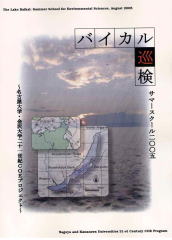Development of Highly Sensitive
and Precise
Environmental Sensors and Analytical
Systems
Takashi Ibusuki, Ph. D., Professor |
 |
Recently, impacts of hazardous chemicals on human healthand ecosystem
as well as global warming attract muchattention. The Japan Sea is surrounded
with Japan, ChinaRussia and other countries and it is concerned about that
thearea may be contaminated with hazardous chemicals emittedfrom these
countries. Much amounts of greenhouse gases(GHGs) as well as SO2, NOx emitted
in this area maysignificantly contribute global warming and acid rain.Monitoring
of chemicals and GHGs at various emissionsources and the environment is
essential for understanding the state of the environment and the needs
of mitigation.
As for hazardous chemicals we are developing a highlysensitive but small
sensor for measurement of dioxins, by usingQCM (Quartz Crystal Microbalance)
modified with a dioxinantibody (The increase in the weight of QCM capturing
dioxins results in the decrease in the frequency of QC). This method can
be applied to measurements of trace PAHs endocrine disruptors by using
specific anti-monochlonals. We are also developing a highly sensitive analytical
system for monitoring trace hydroxyl PAHs. Concerning greenhousegases,
we apply a near infrared spectrometer, using diode lasers working at room
temperature. The spectrometer will be a compact but highly precise analyzer,
which can be easily operated atmonitoring sites. These sensors and analytical
instruments will be used for monitoring hazardous chemicals and GHGs around
the Japan Sea area and the data may teach us the state of environment.



